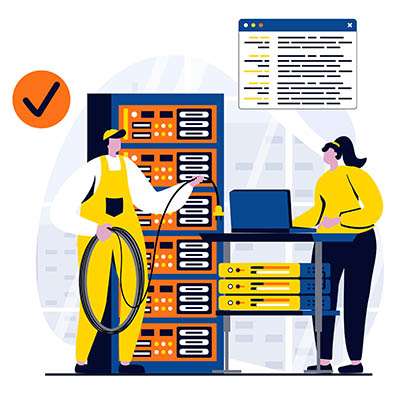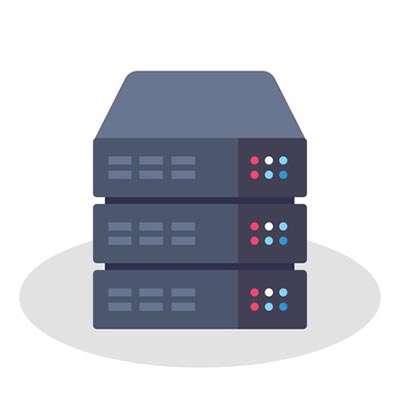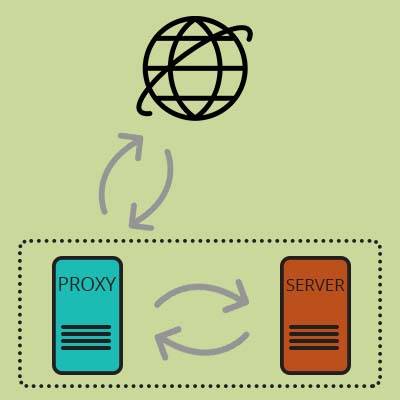Do you ever feel at home in your business’ server room? Assuming you have a server room, and it’s more than just a stuffy closet in an isolated part of your office, that is. If you’re not confident that you can provide your servers with the management, maintenance, and monitoring they require, we recommend you work with a managed IT company to ensure you get the most value you can from your server units.
Macro Systems Blog
Managing servers can be a challenging task for small and medium-sized businesses (SMBs). Despite being essential to your operations, servers are complex technologies that, if not managed properly, can lead to wasted time, energy, and resources. Listed below are the vital functions of server management and how to maximize your current resources.
Many organizations have been in business for so long that they still utilize legacy applications for specific purposes within their computing infrastructure. There simply might not be a better option at the time, so they continue to rely on software that is, to be blunt, showing its age, including the server software that runs their business. Virtual machines offer these businesses the opportunity to still leverage these applications without the inherent risk that comes from using unsupported software.
Regardless of their size, companies need access to some significant amounts of data nowadays. This means that even small businesses have situations to consider that not only carries data considerations, but operational considerations. Considering many businesses have shifted to a remote workforce, it stands to reason that an organization’s hardware investments have to be more strategic than ever before.
Small Businesses don’t always have the financial resources (or the need) to purchase a server. Lots of small organizations will have a few workstations connected together via a wired or wireless Local Area Network (LAN), but when your business gets to a point where it needs more effective means of collaboration, running that LAN through a server can result in quite a few benefits. Below is a look at why a server-based LAN is an improvement and what your company’s server options are.
Servers are arguably of the most vital resources your business has, and they should last for many years. However, after a few years, they may begin to struggle to handle the workloads they once did; if they fail, they'll leave a whole business in a lurch. Knowing the signs of a failing server can significantly improve your chances of avoiding such a situation. Let's go over the three signs that your server needs to be replaced.
Hardware refreshes are often a time of great turmoil for businesses, particularly because of the cost of new servers and the time it takes to migrate data from one location to another. Thankfully, with the advent of virtualized servers, businesses have a viable alternative to the outright purchase of expensive, new hardware solutions. Instead, a virtual server that’s hosted in the cloud offers not only a more immediate reprieve, but can also significantly reduce costs for your organization in the long run.
If you’re like most small businesses, chances are that you have one or two servers in your office that are dedicated to storing and distributing data on your in-house network. Without these machines, you would be in a rough spot. Users wouldn’t be able to access data and your operations would suffer. But what if we told you that there is an easier way to manage data and increase user accessibility that doesn’t include managing server hardware?
Every business from any industry probably has servers that hold important and sensitive data. However, not all organizations have the assets and skills necessary to manage and maintain these complex pieces of hardware. In particular, small businesses struggle with this aspect of running an in-house server, but there’s another option--an outsourced server hosting service from a third-party provider.
When a business finds new software solutions that can effectively replace their older, less efficient systems, applications can often go unused for extended periods of time. However, these unnecessary apps can waste time and money for your business, which can add up quickly. In fact, as much as 38 percent of enterprise applications are wasting away on organizations’ networks.
 If you’re the owner of a small or medium-sized business, mark your calendars for July 14th. This is when Microsoft will stop supporting the 12-year-old server operating system, Windows Server 2003. Any business that is still running this ancient OS needs to upgrade to a more recent one before the end-of-support date arrives.
If you’re the owner of a small or medium-sized business, mark your calendars for July 14th. This is when Microsoft will stop supporting the 12-year-old server operating system, Windows Server 2003. Any business that is still running this ancient OS needs to upgrade to a more recent one before the end-of-support date arrives.
 The IT landscape has changed so dramatically over the past decade that businesses need to stop and consider the latest solutions before cycling out their old IT equipment. In the past, when it came time to replace office technology, one would simply run down a standard list of IT equipment. Now, much of this standard equipment is no longer necessary.
The IT landscape has changed so dramatically over the past decade that businesses need to stop and consider the latest solutions before cycling out their old IT equipment. In the past, when it came time to replace office technology, one would simply run down a standard list of IT equipment. Now, much of this standard equipment is no longer necessary.
 American healthcare organizations must store and exchange patient data in ways that comply with the HIPAA law, or else face hefty fines. One mental health service in Alaska recently learned this lesson the hard way after being hit with a $150,000 fine. Is your healthcare organization’s IT infrastructure 100 percent HIPAA compliant?
American healthcare organizations must store and exchange patient data in ways that comply with the HIPAA law, or else face hefty fines. One mental health service in Alaska recently learned this lesson the hard way after being hit with a $150,000 fine. Is your healthcare organization’s IT infrastructure 100 percent HIPAA compliant?
 Everybody knows operating a computer under cooler temperatures increases its performance. This is why some server closets feel like a walk-in refrigerator. One thing about computers that you may not have known is whether or not running a PC at cooler temperatures extends its life. Logically, one would assume yes, however, the research says otherwise.
Everybody knows operating a computer under cooler temperatures increases its performance. This is why some server closets feel like a walk-in refrigerator. One thing about computers that you may not have known is whether or not running a PC at cooler temperatures extends its life. Logically, one would assume yes, however, the research says otherwise.
 One of the most significant signs that a small startup company is on its way to becoming a mid-sized business is when operations require more than one workstation. Whenever the founder of a company starts their business on their own, they will often do so using their personal computer. As the business grows, a computer network will be needed.
One of the most significant signs that a small startup company is on its way to becoming a mid-sized business is when operations require more than one workstation. Whenever the founder of a company starts their business on their own, they will often do so using their personal computer. As the business grows, a computer network will be needed.
 In October, Microsoft released their Windows Server 2012 R2 offering. To compliment this big release, Microsoft upgraded their Windows Server Essentials software by adding some cool new features and slapping R2 at the end. Windows Server 2012 R2 Essentials gives your business the option to deploy Essentials features in a larger domain as a Windows Server role.
In October, Microsoft released their Windows Server 2012 R2 offering. To compliment this big release, Microsoft upgraded their Windows Server Essentials software by adding some cool new features and slapping R2 at the end. Windows Server 2012 R2 Essentials gives your business the option to deploy Essentials features in a larger domain as a Windows Server role.
 One of the surest ways to boost your bottom line is with cuts. You can then funnel these cuts into your revenue column and look profitable, even with lousy sales. While this approach will boost your bottom line, your numbers will be hollow. The smartest way to cut is to replace the loss with something profitable. Cloud computing lets you make profitable cuts.
One of the surest ways to boost your bottom line is with cuts. You can then funnel these cuts into your revenue column and look profitable, even with lousy sales. While this approach will boost your bottom line, your numbers will be hollow. The smartest way to cut is to replace the loss with something profitable. Cloud computing lets you make profitable cuts.
















